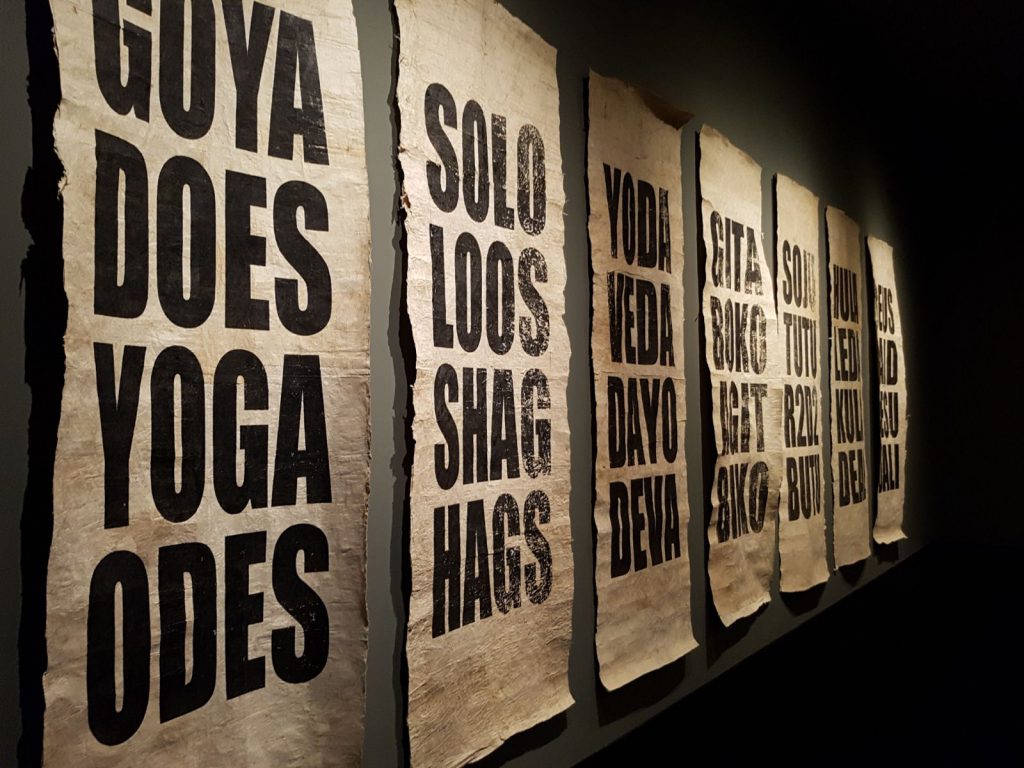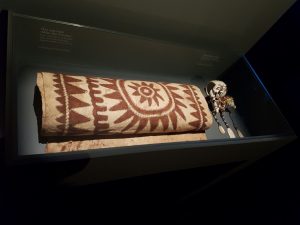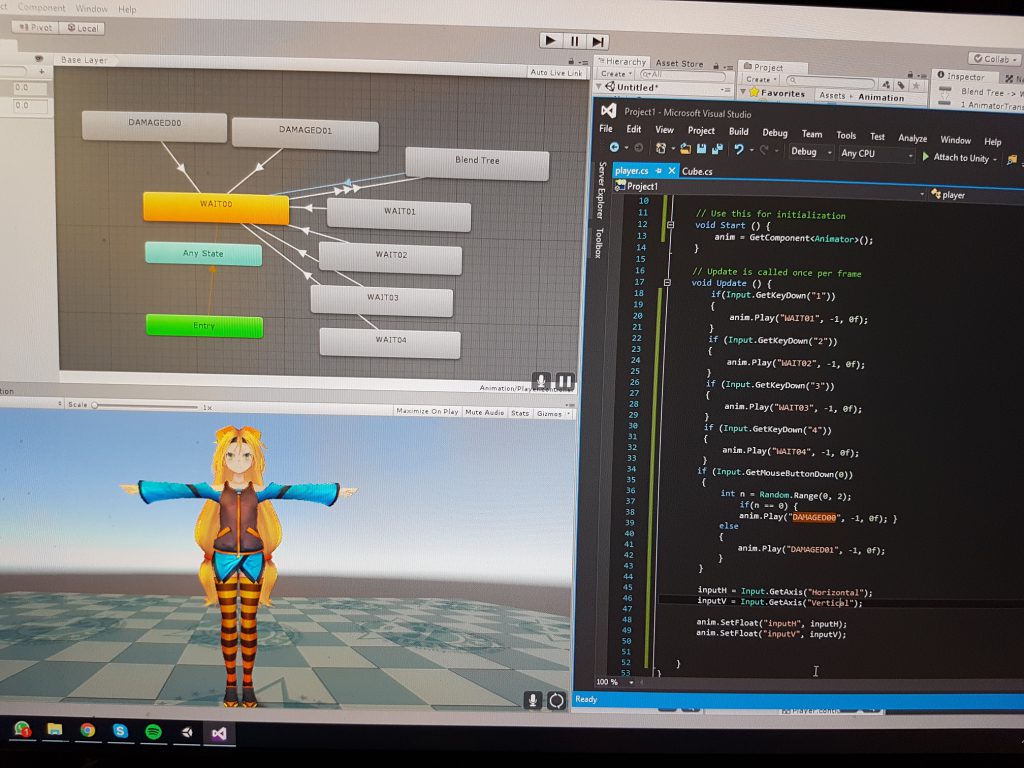During the visit to NTU CCA Singapore on Saturday 27th of January 2018, There were the exhibits of the works and collections from Newell Harry which really caught my eye.
What impressed me was the fact that Newell Harry was having an exhibition of multiple medium(photos, collections of artifacts and the Anagram banners) in the same room and yet had the cohesive ambiance even with the costume from Laura Anderson Barbata that was used in the performative piece Ocean Calling (2017) placed in the middle of room, surrounded by works from Newell Harry and all of the artwork in the room complimented each other and tells a greater Polynesian story than each individual piece.
 In the works of Newell Harry, the artifacts which he collected had been gifted to him, traded or bought at auction, this meant that all of the artifacts contained stories and Newell Harry was inclined towards learning the stories behind each transaction while they were treated as an Tapu(sacred) item which there is a bond between the object and the person, the items were not treated like objects with monetary value but usually as a commodity for barter trade. As of the case studies by Dr Cynthia Chou, she mentioned that the things were the identity constructions of the people, by observing the objects of the people, we could understand more about their way of living and cultures and according to Dr. Cresantia Frances Koya in her Tedx talk Tattoo and Tapa: Reclaiming Pacific Symbols, she mentioned that :
In the works of Newell Harry, the artifacts which he collected had been gifted to him, traded or bought at auction, this meant that all of the artifacts contained stories and Newell Harry was inclined towards learning the stories behind each transaction while they were treated as an Tapu(sacred) item which there is a bond between the object and the person, the items were not treated like objects with monetary value but usually as a commodity for barter trade. As of the case studies by Dr Cynthia Chou, she mentioned that the things were the identity constructions of the people, by observing the objects of the people, we could understand more about their way of living and cultures and according to Dr. Cresantia Frances Koya in her Tedx talk Tattoo and Tapa: Reclaiming Pacific Symbols, she mentioned that :
“our motifs are not just pretty designs, they may be admired for their aesthetic because they are beautiful, but they are in fact part of a complex system of graphic communication.”
Newell Harry saw the communicative nature and deeper meaning underneath these beautiful items which were made by anonymous artist and had used the Tapa cloth for the Anagram Banner, a cloth that was made for everyday needs such as clothing, floor mats, room divider as well as ceremonial uses in weddings and funerals. These Tapa cloth were ingrained into the Polynesian culture and high importance were given to it. By printing diverse anagram of contemporary origin like referencing to Star Wars (Yoda, Solo and R2D2), Newell had put his own story onto an item with deep cultural meaning(Tapa Cloth) and created his own memory and meaning from and for himself.
I think that in Newell Harry’s exhibits, he was focusing mainly in the larger picture around the culture, the people and tried to preserve the aspect of personal stories in these smaller community and the bond that he formed with the people. These objects which he collected was exhibited in “The Oceanic” to remind us that the rich culture is what we need to preserve right now. Using the Polynesians as the representation of every one on earth where we live off the resources of mother nature, if we were to destroy the habitats in the sea or do not solve the rising sea level issue, we would soon lose these Polynesians and cultures. If they, the frontier of the sea were done for, the rest of humanity would shortly follow suit.
References:
NTU CCA Booklet: EXHIBITION The Oceanic
9 December 2017 – 4 March 2018
NTU CCA Booklet: THE CURRENT CONVENING #3 -TABU/TAPU
WHO OWNS THE OCEAN?
25-27 January 2018
Video: Biennale Arte 2015 – Newell Harry
Video: Newell Harry at the Kula Ring Expedition
Video : Tattoo and Tapa: Reclaiming Pacific Symbols | Frances C. Koya Vaka’uta | TEDxSuva




